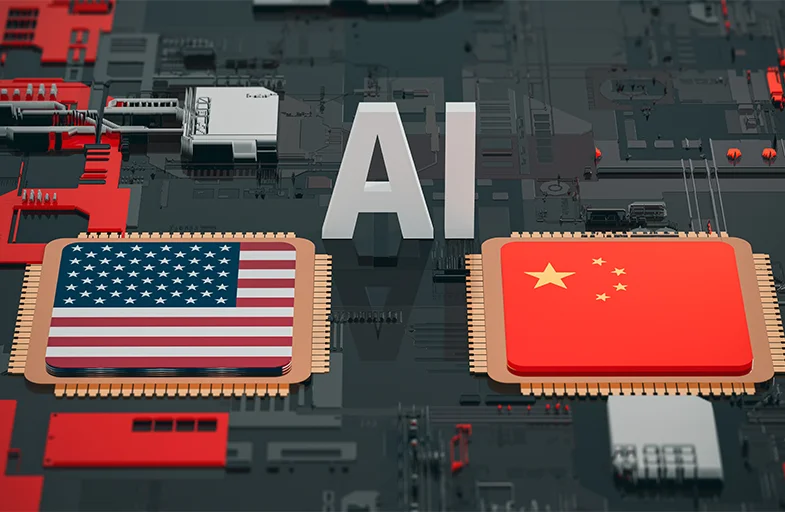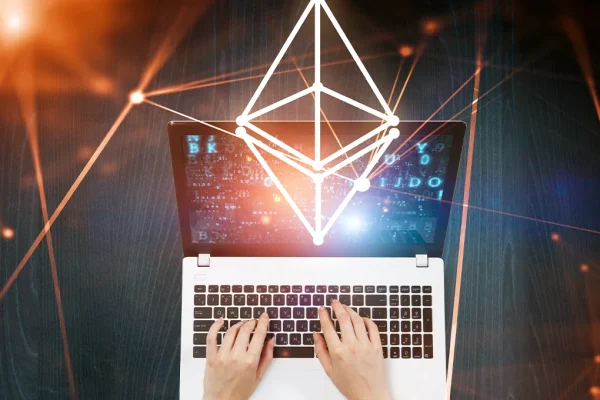Artificial intelligence (AI) and generative AI (GenAI) are no longer just technological trends—they’re pivotal forces reshaping industries worldwide. Their influence is so significant that they increasingly dictate how and when sectors evolve. As a result, governments and corporations are handling AI advancement with calculated caution.
The United States remains the frontrunner in AI development, housing industry giants such as OpenAI, xAI, Alphabet (Google), Meta, Amazon, NVIDIA, Adobe, Apple, Anthropic, Palantir, and more. With leadership spanning AI software, platforms, and chip manufacturing, the U.S. has set the global benchmark.
However, China is rapidly narrowing the gap. Despite facing numerous sanctions and trade barriers, Chinese tech firms continue to innovate and scale in AI. The emergence of players like DeepSeek, which once threatened ChatGPT’s dominance, and robust enterprises like Alibaba, Baidu, and Manus AI, demonstrate China’s unyielding commitment to AI leadership.
Although ChatGPT maintains its lead, DeepSeek’s bold debut was a wake-up call. It highlighted exactly what the U.S. aimed to prevent through export restrictions—China’s ascendancy in AI tech. These restrictions led to GPU manufacturers designing modified AI chips for China that adhered to U.S. regulations. Still, this hasn’t significantly hindered China’s growth, thanks to alternative sourcing strategies and international support.
Now, under the new Trump administration, the U.S. is reportedly reassessing its export policies. According to three sources familiar with the discussions, officials are considering replacing Biden-era rules with government-to-government agreements to manage AI chip exports more strategically. Though not finalized, this policy shift could serve as a potent bargaining tool in trade negotiations, particularly with China.
These changes center around “The Framework for Artificial Intelligence Diffusion,” introduced shortly before the Trump administration took office. Set to take effect on May 15, 2025, the framework categorizes countries into three tiers based on access restrictions to U.S. AI compute resources:
Tier 1: Includes 18 nations such as Taiwan (a crucial chip manufacturing hub), with full access to advanced AI technologies.
Tier 2: Covers over 120 countries like India, Israel, Singapore, and Switzerland, which face stringent restrictions.
Tier 3: Comprises “countries of concern,” including China, Russia, Iran, and Venezuela, which are barred from acquiring advanced U.S. AI computing power.
China’s Rapid Strides in AI and Chip Innovation
Amid global restrictions, China’s AI landscape is thriving. Tech behemoth Alibaba recently launched Qwen 3, an upgraded AI model featuring enhanced hybrid reasoning—combining traditional neural processing with advanced contextual logic.
Similarly, Baidu released Ernie 4.5 Turbo and Ernie X1 Turbo, both emphasizing faster reasoning and improved computational capabilities. These developments underscore China’s efforts to create models competitive with the best from the West.
Meanwhile, DeepSeek—previously banned in South Korea—has made a comeback, now accessible via local app stores. The AI model’s resurgence follows a two-month hiatus triggered by data privacy violations. However, DeepSeek is once again making waves, this time due to rumors surrounding its upcoming release: DeepSeek-R2.
The new DeepSeek-R2 model is rumored to feature
1.2 trillion parameters
78 billion active parameters with a hybrid Mixture of Experts (MoE) architecture
Training efficiency 97.3% cheaper than OpenAI’s GPT-4o ($0.07 per million tokens in, $0.27 out)
Full training on Huawei’s Ascend 910B GPU cluster at 82% efficiency
If the rumors hold, DeepSeek-R2 could debut as early as May 2025.
Huawei Pushes the Envelope on AI Chips
Beyond software, China’s hardware scene is also heating up. Tech titan Huawei Technologies is preparing to test its most advanced AI chip yet—Ascend 910D. Designed to rival NVIDIA’s industry-leading H100 GPUs, this chip signals Huawei’s ambition to compete directly with U.S. chipmakers.
Huawei is also ready to ship its Ascend 910C chips to domestic customers within a month. This rapid hardware rollout underscores China’s strategic push toward technological self-sufficiency amid ongoing export controls.
At the national level, China’s leadership has made its AI ambitions abundantly clear. President Xi Jinping recently emphasized the country’s commitment to self-reliance and innovation in AI. His statement stressed the need for technological progress that would empower industry, drive innovation, and elevate China’s global standing.
“We must recognize the gaps and redouble our efforts to comprehensively advance technological innovation, industrial development, and AI-empowered applications,” Xi declared.
A New Phase in the Global AI Race?
As China accelerates its AI development and chip manufacturing capabilities, the U.S. is reassessing its strategies—seeking both to maintain its edge and to use technology access as a diplomatic lever. With significant advancements unfolding on both sides, the global AI landscape is entering a new, high-stakes phase.
While American firms continue to lead the innovation curve, China’s unrelenting pace and homegrown solutions are narrowing the margin. Whether through diplomatic shifts or technological breakthroughs, the balance of power in the AI arms race is poised for dramatic transformation in 2025.


























